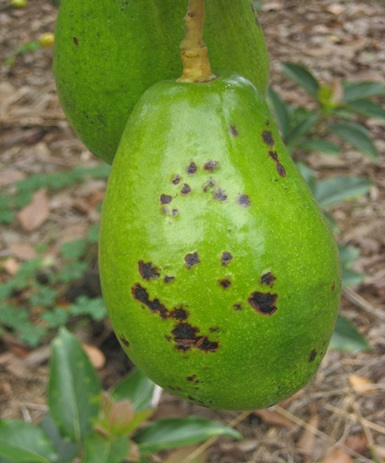
Black Spot
Cercospora Purpurea
Pathogène :
Fungus
Type:
Risque:
HIGH
Manchas



Descrição da doença
Cercospora purpurea is a phytopathogenic fungus responsible for the disease known as "black spot" in avocado. This fungus is characterized by producing conidia, which are asexual spores responsible for the spread of the disease. Conidia develop in structures called conidiophores, which emerge from lesions on infected leaves and fruits. These spores are released and dispersed by wind, rainwater, and irrigation. Once the conidia land on a susceptible surface, they germinate and penetrate the avocado tissue through stomata or wounds. Conditions of high humidity and moderate temperatures favor the growth and development of the fungus, allowing the infection to establish and progress. Cercospora purpurea can survive in infected plant debris and in soil, allowing it to infect new plants during the next growing season.
Descrição do patógeno
Black spot caused by Cercospora purpurea in avocado is a disease that mainly affects the leaves and fruits, reducing their quality and, in severe cases, affecting the yield of the crop. The disease initially manifests itself as small dark Taches on the leaves and fruits, which progress and enlarge over time.
- Small black or purple Taches on the leaves.
- Necrotic Taches with a chlorotic halo.
- Premature fall of leaves.
- Dark and sunken lesions on the fruits.
- Reduction in the size and quality of the fruits.
- Deformed or scarred fruits.
TEMPERATURA E UMIDADE
20°C - 28°C
70% - 90%
CAMINHOS DE TRANSMISSÃO</span
Spores carried by wind, rainwater, overhead irrigation, contaminated agricultural tools, direct contact between plants
CONTROL
Tratamento químico
• COPPER OXYCHLORIDE 35% (exp. in Cu) [WG] P/P
• LAMINARIN 4.5% [SL] P/S
Tratamento biológico
• COPPER OXYCHLORIDE 35% (exp. in Cu) [WG] P/P
• LAMINARIN 4.5% [SL] P/S
Traitements biologiques
-
Recomendações
- Carry out regular monitoring of the crop to detect the presence of black Taches early.
- Implement integrated pest management practices that include crop rotation and use of resistant varieties.
- Ensure adequate ventilation and spacing between plants to reduce humidity.
- Apply preventive and curative fungicides following technical recommendations.
- Remove and destroy remains of infected plants to reduce the source of inoculum.
- Improve soil drainage and avoid excess watering.
- Maintain adequate fertilization to strengthen plants and increase their resistance to diseases.
- Disinfect agricultural tools and equipment before use.
TRAITEMENTS
Remèdes maison
There are no home treatments
Alliés naturels
Traitements chimiques
There are no treatments for this disease. Treatments are directed at the insect vectors that transmit it. See insect treatments.
RECOMMANDATIONS
- Check the back of the leaves frequently, especially in dry weather.
- Spray water on the leaves to increase humidity and prevent them from settling.
- Keep plants healthy with good watering and adequate light.
- If you see cobwebs or damage, clean the leaves with a damp cloth or pressurized water.
- Use potassium soap or neem oil every few days until they disappear.
Plantes répulsives
Rosemary, Dill, Coriander
PRODUITS RECOMMANDÉS
*Os tratamentos recomendados ainda são recomendações de acordo com os bancos de dados de autoridades e em nenhum momento substituem as diretrizes estabelecidas de acordo com a legislação de cada país
*Les produits présentés sont des recommandations et ne sont pas nos propres produits. En tant qu'associés Amazon, nous gagnons des revenus grâce aux achats de produits recommandés.





















